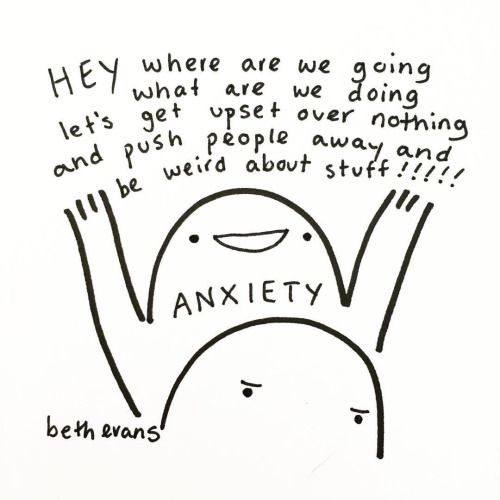Do all dreams have meaning
Do All Dreams Have Meaning?
Whether you’re flying through the sky, falling from a twelve-story building or having a romantic relationship with your neighbor, dreams are a window into a world without constraints. The barriers of our everyday life don’t exist. Some parts of our dream world appear realistic, but others are tokens of our imagination. And this begs to question: Do our dreams have meaning? For researchers, this has long been a point of contention.
According to Cognitive Neuroscientist Antti Revonsuo, dreams are meant to prepare us for real-life situations that we may encounter in the future. Dreaming simulates a world where we are immersed, he says. “Dreams helps us to recognize threats and learn how to respond to them in some meaningful way. We’re rehearsing them before they happen,” says Revonsuo.
The Purpose of Dreaming
Dreaming also prepares us for social interactions, says Revonsuo. Positive and neutral dreams may help hone our social cognition and perception. “We are very rarely alone in our dream world, so these dreams help us to rehearse social interaction,” he says.
It wouldn’t make sense for dreams not to have meaning because they’ve stayed throughout our evolutionary history, says Revonsuo. Animals also dream and it’s unlikely that it’s for no reason. Other experts contend that the breadth of dreaming is so wide that defining its purpose and meaning is like defining the purpose of waking thought.
Dreaming is just thinking, but in a different brain state. Defining its purpose depends on what you’re dreaming about, says Harvard psychology professor Deirdre Barrett, author of the book The Committee of Sleep. We agonize about many of the same things when we’re sleeping as when we’re awake, like relationships, work issues, hopes and fears, she says. Dreams are different, but the content is often the same.
“Visual areas of the brain are much more active during dream states as are emotional centers. While linear logic and language areas are damped down,” says Barrett.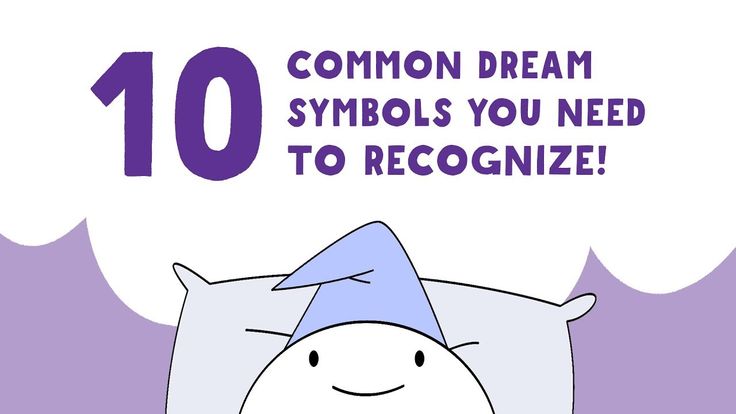 “We’re not thinking in words as much. We’re thinking in images, simple narratives and in intuitive emotional ways.”
“We’re not thinking in words as much. We’re thinking in images, simple narratives and in intuitive emotional ways.”
Barrett says that dreams work out many of the same issues that we have when we’re awake, but she doesn't advise that they have a single purpose or even several purposes. “Dreams give us a different idea of how to do things because they help us to think outside of the box and they can solve problems that involve going against conventional wisdom,” she says.
Many of us have methods for approaching issues that stem from our early childhood experiences, says Barrett. But dreams help us to think differently because the prefrontal cortex, which is associated with habits and learned behaviors, is less active when we’re dreaming.
Should Your Dreams Ever Concern You?
You may find dreams automatically concerning when they’re terrifying. Things like post traumatic nightmares — more intense nightmares that may replay actual traumatic events and are particularly violent — should concern you.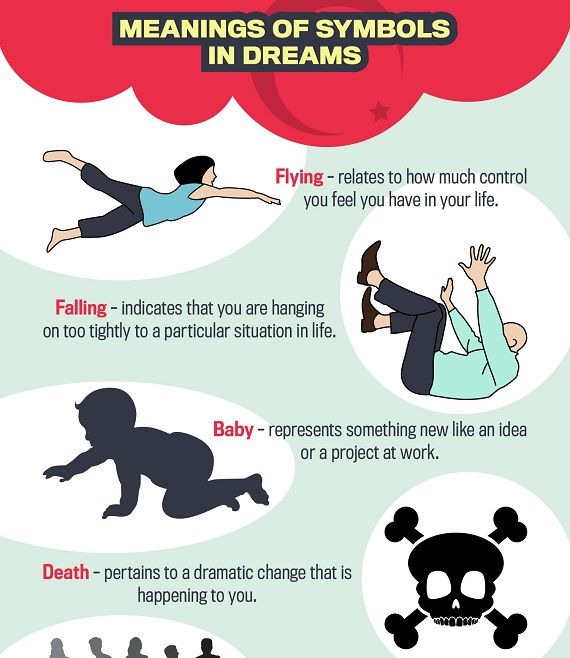 But in most cases, says Barrett, they already do because we wake up petrified.
But in most cases, says Barrett, they already do because we wake up petrified.
Generally, however, people tend to get more concerned with their dreams than necessary. It’s relatively normal to have some sexual dreams about someone other than your monogamous partner. People may also have dreams where they’ve murdered someone, but that doesn’t mean they’re violent people in real life. Barrett says most of the time she’s telling clients not to worry about their dreams, most commonly those that involve sex or aggression.
“Dreams are casting a pretty loose net of associations to things that may be metaphorically a part of ourselves, but aren’t closely tied into any actions that we may take in real life,” says Barrett.
While it’s worth looking at your dreams and noticing some of the themes that might prevail, feeling guilty about a dreamed sexual encounter, isn’t necessary. Still, dreams can give us a different perspective on threats and problems that we encounter in our everyday life.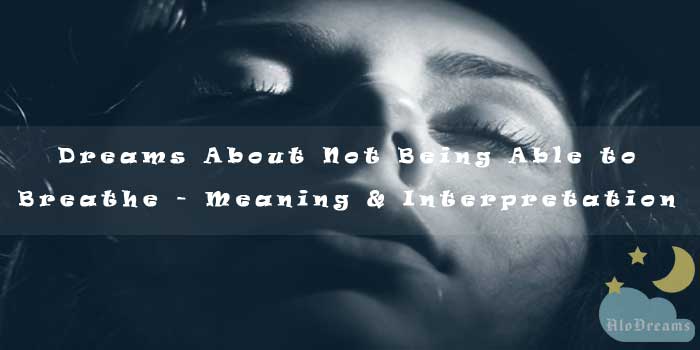 What we dream at night can allow us to think in a more “flexible” way, says Barrett, and find new solutions to the issues that pervade our days.
What we dream at night can allow us to think in a more “flexible” way, says Barrett, and find new solutions to the issues that pervade our days.
Do Dreams Have Meaning? What the Experts Believe
Some dreams slip away like minnows when you wake up and hazily try to grasp at them. Others remain vivid in your memory, so clear and unforgettable that, as the days pass, you might start to wonder if you actually dreamed them more than once.
Even if you don’t remember many (or any) of your dreams, you do still have them. While experts still have plenty to discover about dreams, they do generally agree that dreaming is part of the human experience.
You can cover a lot of ground in your dreams. Common experiences include:
- sexy encounters with a crush
- ordinary activities, like doing chores or buying groceries
- terrifying experiences, like returning to high school or being chased by monsters
- gaining superpowers or magical abilities
Whether your dreams are mundane or peculiar, you might want to know if they have any deeper significance.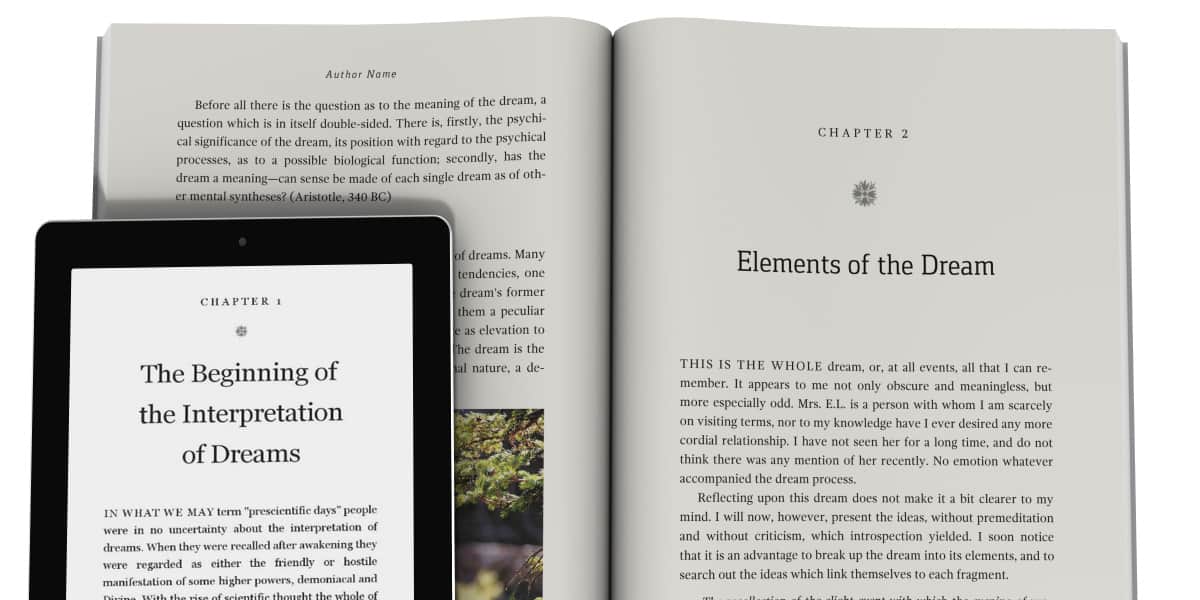 Experts haven’t come up with a clear answer, but you’ll find some main theories below — along with a few tips for decoding your own dreams.
Experts haven’t come up with a clear answer, but you’ll find some main theories below — along with a few tips for decoding your own dreams.
Plenty of psychologists and other experts have theorized on the deeper meaning of dreams.
Freud’s theory of unconscious wish fulfillment
Psychologist Sigmund Freud had a lot to say about dreams (and not all of it related to sex).
He suggested that dreams helped protect people from waking up early when light or sound disrupted their sleep, but he also believed dreams pointed to buried desires.
Your sleeping brain creates what he called a “manifest dream” from snippets of everyday images, experiences, and memories. The manifest dream simplifies, reorganizes, and masks the “latent dream,” or your repressed and unconscious wishes.
In other words, the manifest dream uses various symbols and bizarre or unusual images to conceal the latent dream, or what you’re really dreaming about.
Jung’s theory of compensation and self-portrayal
Like Freud, Carl Jung believed dreams had meaning.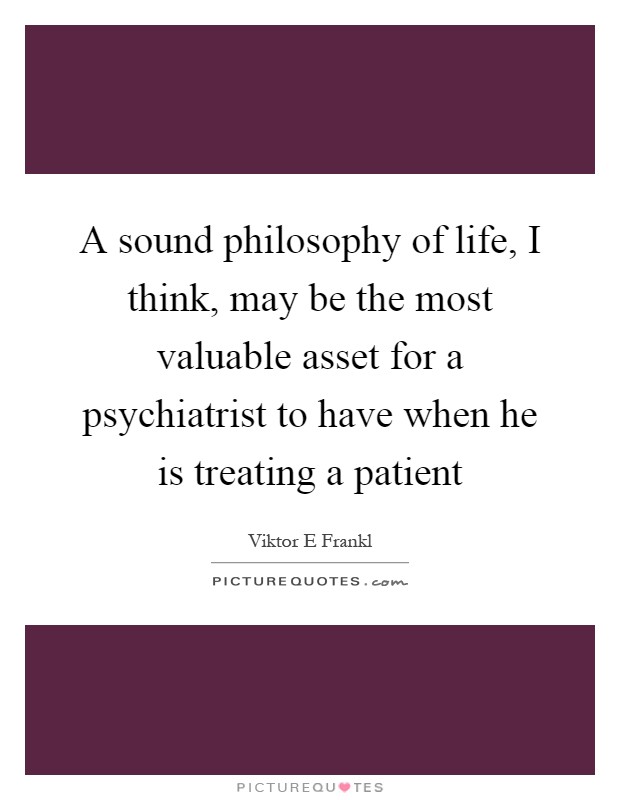 Jung focused on specific archetypes, or patterns, that appear symbolically in dreams, theorizing that dreams could help explain daily events and balance out aspects of yourself you aren’t aware of yet.
Jung focused on specific archetypes, or patterns, that appear symbolically in dreams, theorizing that dreams could help explain daily events and balance out aspects of yourself you aren’t aware of yet.
Say, for example, you have a lighthearted relationship with your partner. You enjoy the same hobbies, have great sexual chemistry, and get along well — but you can’t shake the feeling that something deeper’s missing from your relationship.
One night, you dream the two of you are reviewing housing listings, wandering through the furniture section of a department store, and then, suddenly (in the abrupt nature of dreams), taking a leisurely walk through a quiet park.
Upon waking, you might realize your dream exposed some of the more mundane things absent in your relationship, while also suggesting you might want a relationship that includes thoughtful planning for the future along with fun.
Other key theories
Other dream researchers have offered their own theories as to the meaning of dreams.
Psychologist Calvin S. Hall considered dreams part of the cognition process, or a type of thinking that happens as you sleep.
Since the images that appear in dreams reflect elements of daily life, Hall believed dreams could offer important insight into how you view yourself and others, your problems and conflicts, and the world in general.
Linguist and philosopher George Lakoff believed dreams offered a metaphorical glimpse into daily challenges and life events. In other words, the abstract symbols appearing in your dreams represent real hardships.
Psychologist and dream researcher Rosalind Cartwright also tied dreams to significant life events and emotional experiences. She believed dreams played an important role in cognitive processes, including memory and emotion regulation.
Professor G. William Domhoff also connected dreams to daily experiences. The things you do and think about during the day can resurface in dreams, he suggested, while your emotional mindset helps shape their unique content.
Domhoff also noted that, although dreams may shed some light on heavy concerns, they might not have any real purpose. You forget most of your dreams, after all.
William Dement, who helped found the field of sleep medicine, similarly suggested that, while dreams may lack a clear purpose, they can still convey meaningful messages.
Many experts don’t believe dreams have much meaning, but believe they still serve a purpose.
Existing theories outline a few of these purposes.
Threat simulation theory
Some researchers suggest that dreams serve an important evolutionary purpose.
According to threat simulation theory, dreams offer the chance to practice identifying, avoiding, and dealing with potential threats. By safely handling these threats in your dreams, you might feel safer in your waking life.
Research from 2009 found some support for this theory by comparing dreams of children who had experienced trauma with children who hadn’t.
Of course, threat simulation theory can also tie into other theories about dream meaning. Traumatized children could, for example, have more threatening dreams, because they often feel afraid in daily life.
Traumatized children could, for example, have more threatening dreams, because they often feel afraid in daily life.
Activation-synthesis theory
According to the activation-synthesis theory, dreams are nothing more than a collection of random images and thoughts, projected during sleep as a result of normal brain activity.
These images don’t follow any narrative structure, thanks to the pons, your brain’s random dream generator. You create the story of your dream on your own, after waking up.
Supporters of this theory believe dreams can feel strange, because these random images often make little sense when they’re combined.
Dreams as emotional regulation
The unpleasant or unwanted emotions you experience in daily life can pop up in your dreams, too.
Anxiety, guilt, sadness, or fear can quickly get overwhelming. But some experts have theorized that navigating these feelings in dreamland can help you begin resolving these feelings without all the stress.
Wondering how that might work? Well, when you dream during the rapid eye movement (REM) stage of sleep, the parts of the brain that help regulate emotion and memory are active.
What’s not active is the chemical messenger noradrenaline, which can produce feelings of anxiety or stress.
Continual-activation theory
Your brain doesn’t completely shut down when you go to sleep. Instead, it uses this time to carry out important processes, including transferring short-term memories into long-term storage.
As you sleep, your brain also takes out the trash, in a manner of speaking, by getting rid of all the leftover, unnecessary information.
As your unconscious brain focuses on processing memories, activity in your conscious brain slows way down.
According to the continual-activation theory, this prompts your brain to send a flow of data from memory storage into the conscious brain. You can think of this data — aka your dreams — as a sort of screensaver keeping the conscious part of your brain up and running, despite the lack of actual activity.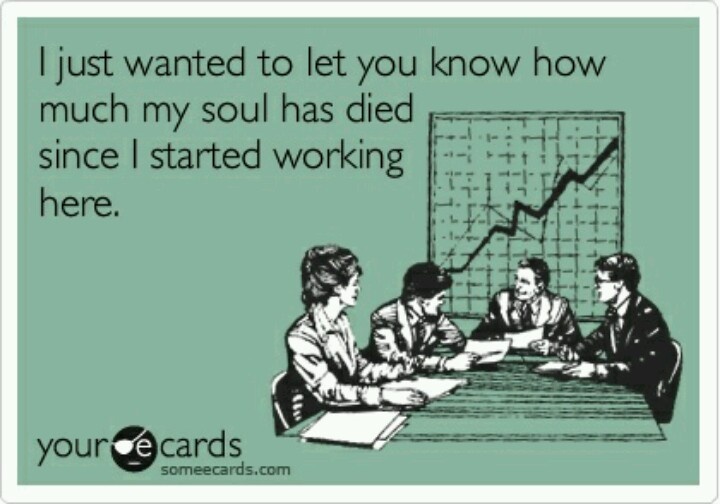
Common themes and their potential meanings
No matter what scientific theories might suggest, people around the world have long believed in the significance of dreams and attempted to guess their meanings.
Dreams may seem so intriguing in part because they’re not fully understood. But certain dreams show up so often across generations and cultures that many people believe these common themes suggest that dreams do, in fact, have significance.
Here are some common dream themes, plus possible interpretations:
| A dream about | Could mean |
| cheating on your partner | you’re having a hard time getting your needs met in the relationship, or you feel trapped in another area of your life |
| your partner cheating | you feel afraid of losing your partner or rejection in another area of life |
| failing a test | you’re facing some stress that you don’t feel ready to handle |
| being naked or experiencing other public embarrassment | you feel vulnerable and worry other people will notice your flaws |
| discovering money or treasure | you feel confident, worthy, and good about yourself |
| missing your bus or train | your everyday life leaves you frustrated and you believe you’re lacking something important |
| losing your teeth | you’re worried about aging, or you have insecurities around how other people perceive you |
| finding new rooms | you’re discovering new abilities, interests, or future possibilities for yourself |
| falling | you feel unsupported by loved ones, or as if you’re losing control over some aspect of your life |
| dying | you’re facing some unwelcome changes or you have some uncertainties about the future |
Ready to dig a little deeper into your dreams? These strategies can help.
Make sure you’re getting quality sleep
Remembering your dreams is an important part of deciphering them.
Dream recall may happen more naturally when you get enough sleep. Aim for about 7 to 9 hours of sleep each night to get the right amount of REM sleep. This may, in turn, boost dream recall.
TipAs you drift off to sleep, try repeating to yourself, “I’m going to dream vividly, and I’m going to remember those dreams when I wake up.”
Review the dream
When you wake up from a dream, your first instinct might be to reach for your dream journal. Instead, lie still for a moment and let the dream really marinate.
As you let each scene that comes to you unfold, try to open your awareness to any thoughts or feelings you experienced during the dream.
As you think back over the events of the dream, pay attention to any small details that stand out. They might seem minor in the light of day, but it’s very possible they had more significance in your dream.
Write it down
Once you’ve taken yourself through the dream, grab a notebook and write down everything you can remember. As you write, you might remember more key details that help shape the dream narrative.
Jot down everything you can think of — even if you aren’t sure exactly what happened. You might write, for example, “Wandering through forest alone, searching for someone or something. Not sure, but I felt lost and lonely.”
Keep track of details, like:
- colors and sounds
- other people in the dream
- anything you said or heard someone else say
- buildings or places you visited
- moods and feelings
- key objects in the dream, like cars, weapons, tools, or books
TipKeep a notebook and small lamp on your nightstand to make this process easier, especially if you tend to wake up in the middle of the night.
Even getting out of bed to find some paper can end up jarring fragments of the dream from your mind.

Make connections to your own life
Books that offer dream interpretations can be helpful, but you’ll often gain more insight by examining the dream from the unique lens of your experiences.
People have plenty of things to say about their own dreams, but someone else’s meaning might not hold true for you.
Maybe you dream about a rabbit eating grass in the park. At first, this might seem like a simple, even somewhat boring dream. But, when you dig a little deeper, you remember feeling happy and peaceful in the dream, and that you wanted a pet rabbit as a child.
Connecting these facts to your everyday life, you might conclude that spending time outside felt good and decide to visit the park more often. You also realize you’d enjoy having a pet in your life.
No one knows for certain what purpose dreams serve. But, at the end of the day, their true function might not really matter.
If you find them meaningful, then they have value to you.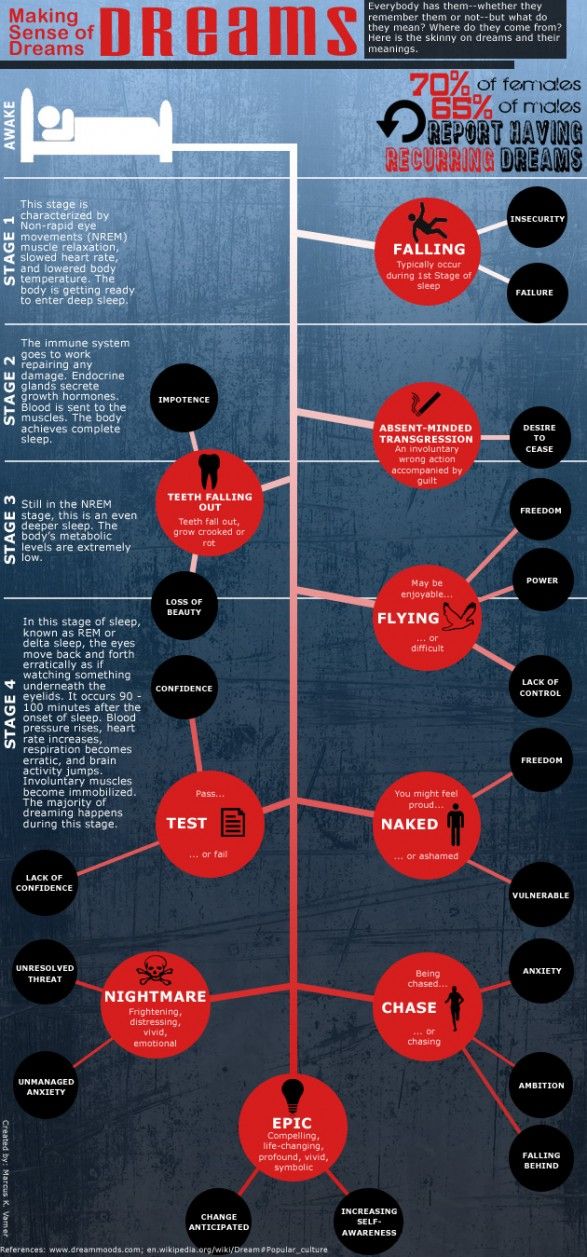
Crystal Raypole has previously worked as a writer and editor for GoodTherapy. Her fields of interest include Asian languages and literature, Japanese translation, cooking, natural sciences, sex positivity, and mental health. In particular, she’s committed to helping decrease stigma around mental health issues.
when and on what days do you dream
The father of psychoanalysis Sigmund Freud said: “The more strange a dream seems to us, the deeper meaning it carries.” It is not for nothing that we used to call night visions with subtext prophetic dreams. They, like an internal oracle, not only suggest what is wrong, but also indicate where to run. Human consciousness is critical: sometimes it devalues events that are important for his internal development, forcing him to perceive them as something insignificant.
Haven't called your parents for a long time? Nothing, then, - calms the mind. Didn't talk heart to heart with the children? Time is like that. But the psyche can not be deceived - recognizing an obstacle that creates problems for the inner "I", it sends us signals in a dream when consciousness loses its vigilance. She pushes the "owner" to concentrate on something, to rethink, hints at the correct outcome. After all, prophetic means predictive.
She pushes the "owner" to concentrate on something, to rethink, hints at the correct outcome. After all, prophetic means predictive.
But a person cannot always distinguish when he has prophetic dreams, and when the brain simply draws meaningless pictures. Experts say it is possible to learn to recognize dreams with meaning and understand why they dream. You can even calculate when the "dream prophecy" will come true.
- It depends on what phase the dream was in, - explains numerologist and esotericist Anton Ushmanov . - It is conditionally possible to divide a dream into 3 intervals - the beginning, the middle and the end. If a prophetic dream had a dream in the first phase, then it will come true within a year. If in the second, in the middle of the night, then - within 6 months. If in the third, closer to the morning - for a month. If you saw a prophetic dream just before dawn, it will come true within 12 days. And if, before sunset - during the day.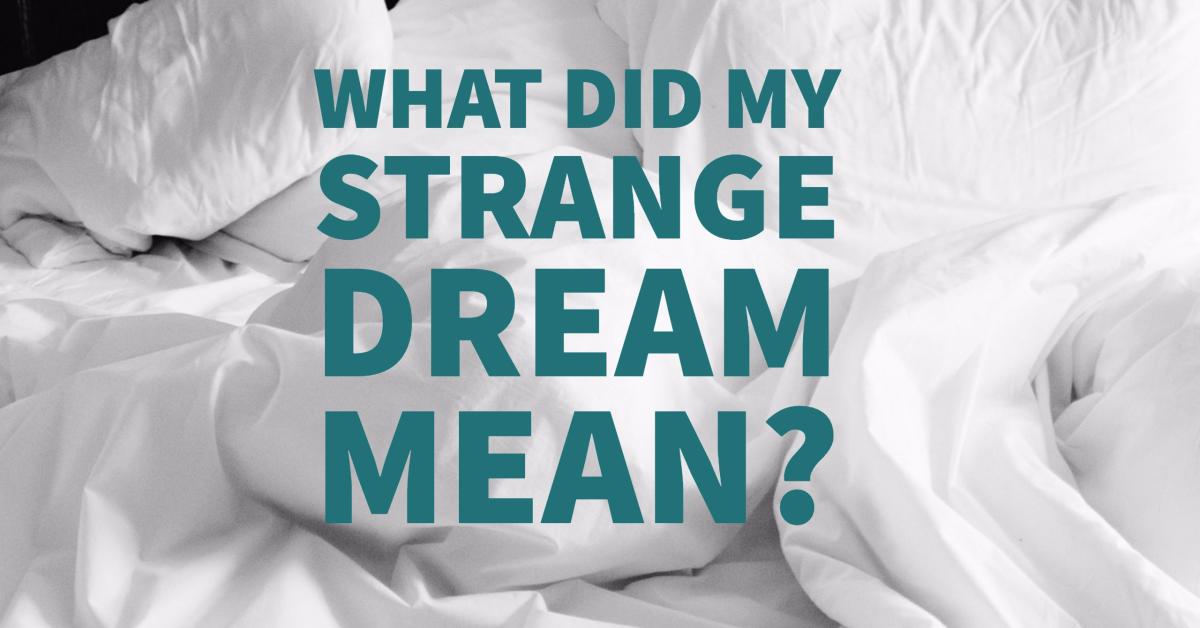
In addition, it is useful to know on which days of the week prophetic dreams occur.
What is a prophetic dream
Prophetic dreams are usually viewed from two positions - scientific and esoteric. From the point of view of science, sleep as such is the result of the work of the brain, which, as you know, never sleeps. Throughout its life, the human supercomputer has been busy modeling reality based on experience gleaned through receptors, hearing, smell, sight. The human brain processes a million signals per second. But while we are awake, we cannot realize the results of this “revision” - consciousness interferes.
“At night, when our rational part is resting, the brain calmly processes all the information during the day through the subconscious,” psychologist Lyubov Ozhmegova explains the process.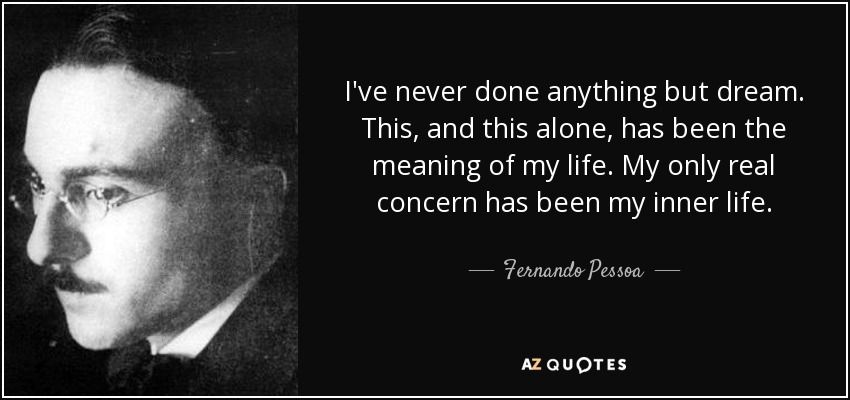 - And we see the images that the subconscious shows.
- And we see the images that the subconscious shows.
Just with their help, according to psychiatrist, psychotherapist, dream specialist, author of the first scientific Internet dream book in Runet Yaroslav Filatov , the brain helps a person understand how this or that situation will develop. In fact, the models that the brain builds are the very prophetic dreams.
Dreams are nothing more than information processing. Photo: pixabay.com “Some people say that the brain predicts in a dream,” says Filatov. - But it would be more correct to say - it models: the state of objects, the reactions of people. Brain models are built constantly, and in a dream they appear to us.
Esotericists and followers of spiritual practices associate the phenomenon of prophetic dreams with reading information from space.
— It happens unconsciously, — Alena Arkina, an energy therapist, the author of the life reconstruction method, shares his thoughts , - Possible scenarios in real life are read.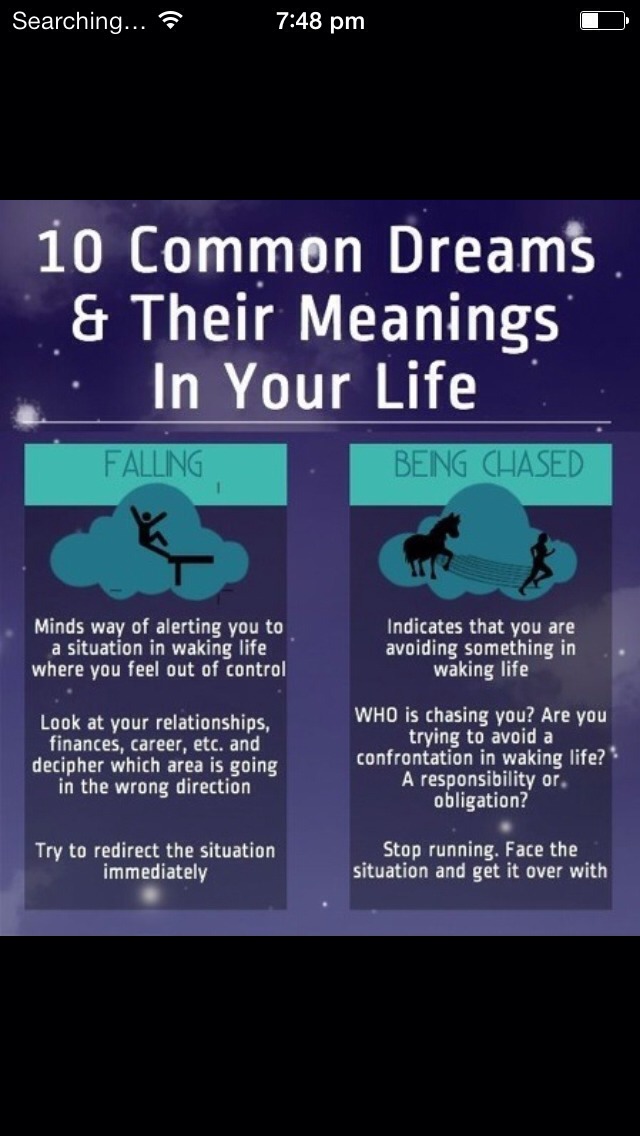
— The most important thing in prophetic dreams is that, having seen them, a person can draw conclusions, realize the reasons for what is happening to him, get answers to questions, — summarizes the psychologist-hypnologist Alexandria Sadofyeva.
Why prophetic dreams occur
Mystic Denis Banchenko is sure that prophetic dreams occur for three reasons. First, when a person was too close to an important event. Secondly, when the "genius of the earth" directly pushes him to pay attention to this or that situation. And thirdly, when consciousness reaches such a level of development that it itself conducts an information signal from the outside.
- A person can capture the vibrations of space in the form of a beam of information (a future event), - energy therapist Alena Arkina explains . - In parallel, there is an infinite number of options for the development of events. And a person catches one of them in a dream.
This happens when the brain and subconscious are trying to show the most probable scenarios for the future.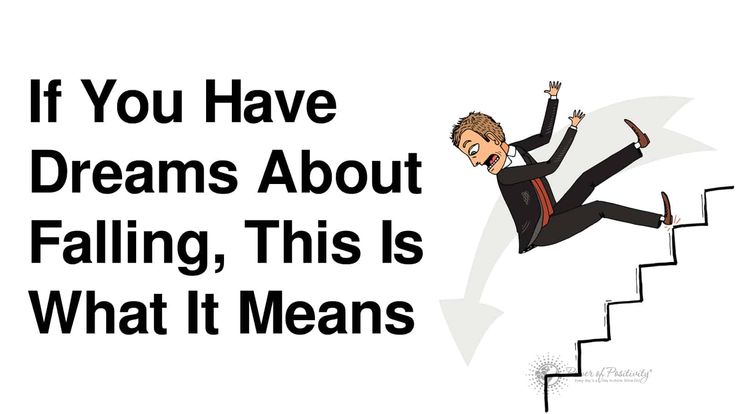 But why does our supercomputer and inner self need this? Why should they show us where to go and where to spread the straw?
But why does our supercomputer and inner self need this? Why should they show us where to go and where to spread the straw?
“The brain is busy helping us to survive every minute,” psychiatrist Yaroslav Filatov reminds . If nothing bad happens, it doesn't mean that there are no dangers. And the task of the psyche is to reveal our capabilities and abilities that will help in development. From the fulfillment of these tasks, prophetic dreams are born.
In other words, in order for a person to “receive a hat” less during wakefulness, the psyche tries to get through to him at night.
- Dreams are dreamed by all living beings who have a soul - assures esoteric Anton Ushmanov . - At night, we get the opportunity to live through some of the negative scenarios, "digest" them in a dream in order to avoid or learn how to cope live.
On what days prophetic dreams come true
Monday
It is believed that empty dreams are dreamed on the first day of the week. There can be many emotions and experiences in them, but not very prophecies. But if the dream that occurred on Monday is vivid and memorable, you can try to decipher it. Perhaps he will suggest a solution to some minor life task, but you should not look for a deep decisive meaning in it.
There can be many emotions and experiences in them, but not very prophecies. But if the dream that occurred on Monday is vivid and memorable, you can try to decipher it. Perhaps he will suggest a solution to some minor life task, but you should not look for a deep decisive meaning in it.
Tuesday
Dreams on Tuesday may come true. And, quite quickly - within two weeks. If the Tuesday dream is with a plus sign, it is better to make every effort to make it come true. And if with a minus sign, on the contrary, it makes sense to try to make sure that the dream does not come true. In fact, Tuesday is the day of choice, when you have to decide whether you want the dream to turn into reality or not. The consequences of inaction can be very unpleasant.
Wednesday
On Wednesdays, as esotericists say, there is not much trust in dreams. They are mostly empty. You don't have to trust them too much. In dreams that occurred on Wednesday, as a rule, there are no prophecies, but there are “bells” regarding your character and personal qualities.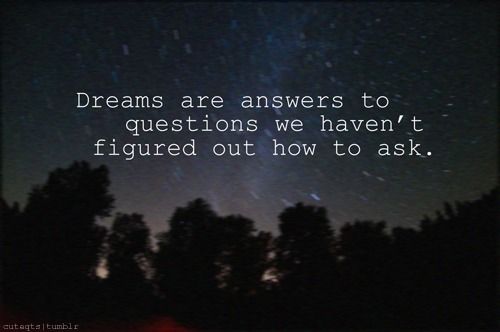 They can be a revelation. Try to figure out what the psyche signals: this will help to work on yourself.
They can be a revelation. Try to figure out what the psyche signals: this will help to work on yourself.
Thursday
"Dreams from Thursday to Friday are prophetic" - this is how people think. And experts say it's true: Thursday's visions openly hint at the future and indicate how this or that situation will develop. Prophetic dreams that appeared on Thursday will come true within three years. Often on Thursdays, romantic, fabulous visions come. But in fact, they are far from romance as such. She is just a symbol. Even in such dreams, you need to look for important life prophecies.
Friday
Friday dreams are usually very ordinary. Deciphering them is just a waste of time. But if you dream of a romantic plot on Friday, it directly hints at a relationship with your soulmate. A bad dream "about love" does not bode well in reality. So be vigilant and take action.
Saturday
Saturday sleep should be analyzed more closely. It may come true before noon. In addition, esotericists say that a dream that occurred on Saturday can predict not only your future: you can see in it what awaits your loved ones. I often have nightmares on Saturdays. They do not need to be afraid, but worth taking into account.
Sunday
Sunday sleep can be "ordered". If you concentrate well and formulate a desire (or question), you may dream of exactly the situation that worries you the most. Sunday dreams are often prophetic and come true quickly. Often on Sundays, good prophetic dreams are dreamed, predicting prosperity.
Popular questions and answers
What do you need to know about prophetic dreams in order to learn how to understand them? Here is what experts answer the most common questions about prophetic dreams.
Who has prophetic dreams?
According to psychiatrist Yaroslav Filatov, the most likely to see prophetic dreams are introverts - people who are closed and reasonable. They know how to delve into themselves, look at the little things and draw conclusions. In other words, prophetic dreams are for people who are sensitive to themselves, the signals of their body and to others.
They know how to delve into themselves, look at the little things and draw conclusions. In other words, prophetic dreams are for people who are sensitive to themselves, the signals of their body and to others.
“And prophetic dreams are often dreamed of by those who trust their intuition,” adds psychologist-hypnologist Alexandria Sadofyeva . — And for those who are going through a difficult situation, whose internal resources are focused on solving a vital task.
People of science are convinced that in order to see a prophetic dream, no special abilities are needed. At the same time, esotericists assure: a predisposition to extrasensory perception increases the chances of getting more prophetic dreams.
- The date of birth also plays a role, - says esoteric Anton Ushmanov . - People born on the 2nd, 9th, 15th, 18th, 20th of any month, as well as those born in February, September and October, are more inclined to perceive prophetic dreams than others.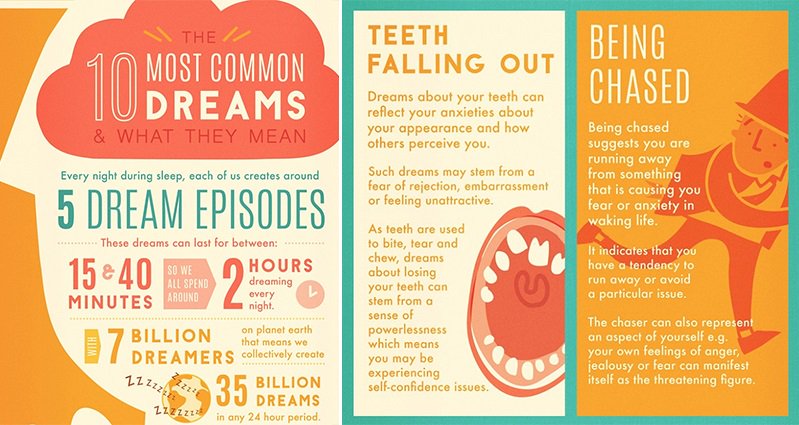 But there is a category of people who cannot have prophetic dreams. These are people who take intoxication, lead a dirty lifestyle in terms of hygiene and thoughts, in other words - in ignorance, greedy and prone to gossip. All this interferes with the perception of dreams or distorts their meaning. In addition, subtle entities can connect to such people in order to broadcast what is not really there.
But there is a category of people who cannot have prophetic dreams. These are people who take intoxication, lead a dirty lifestyle in terms of hygiene and thoughts, in other words - in ignorance, greedy and prone to gossip. All this interferes with the perception of dreams or distorts their meaning. In addition, subtle entities can connect to such people in order to broadcast what is not really there.
How to understand that a prophetic dream?
- A prophetic dream clearly echoes reality, - tells dream specialist Yaroslav Filatov . - It is about significant events for us. This is either a warning or a prediction.
But a prophetic dream may not come true. For example, if a person, having seen something terrible in a vision, in reality will actively influence events in order to avoid trouble. And then the prophetic night vision, as it were, is no longer prophetic.
- A prophetic dream can be recognized by the feeling with which you wake up - teaches psychologist-hypnologist Sadofyeva . - It is bright, lively and can be repeated with a certain frequency.
- It is bright, lively and can be repeated with a certain frequency.
If a dream does not find parallels in everyday life, the recognition of the “degree” of its prophecy can be trusted to intuition and feelings. With this, mystic Denis Banchenko assures , women cope better than men.
“Women have a more developed right hemisphere of the brain and the sensory sphere,” he explains. - They usually feel that the dream is prophetic. And it's not just a feeling, it's a signal.
Well, if the signal did not happen, you can analyze additional signs: and prophetic dreams have them.
— A prophetic dream is distinguished by its detail, — energy therapist Arkina lists . - A person, waking up after a prophetic dream, can even remember tastes, smells, describe in detail events, textures. If a dream left an indelible imprint, an emotion, then it is prophetic.
When are dreams prophetic and when are they not?
People of science who follow Uncle Freud's ideas say: man himself can make his dreams prophetic.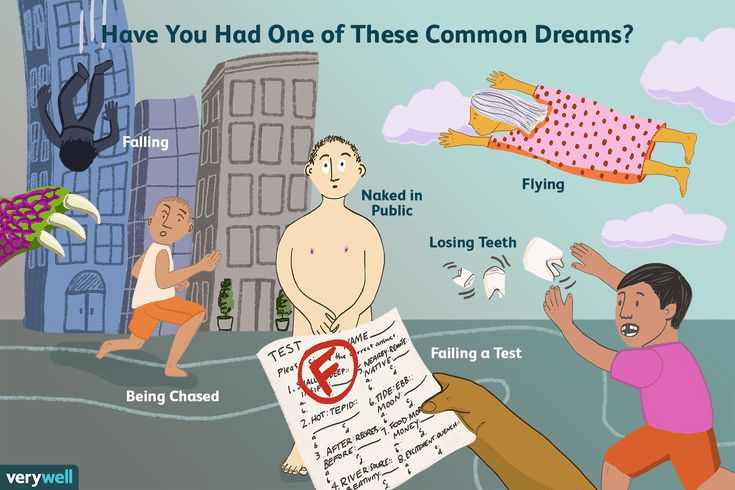 Suppose you dreamed of a classmate with whom you had not communicated for many years. For what? What for? What does this dream mean? If nothing is done, it will turn out that absolutely nothing. But, if you call an old friend and talk heart to heart with her, the dream will become prophetic. Another thing, what exactly did the brain and psyche want to say with this dream? Perhaps he is a hint of a lack of communication, or perhaps a reminder of a mistake that should be corrected long ago. By the way, for our inner "I" there are no small topics. This "oak" consciousness believes that the meaning of a prophetic dream is global, pretentious and terrible. For the psyche, which collects the human gut bit by bit, everything is important. And what devalues consciousness - especially.
Suppose you dreamed of a classmate with whom you had not communicated for many years. For what? What for? What does this dream mean? If nothing is done, it will turn out that absolutely nothing. But, if you call an old friend and talk heart to heart with her, the dream will become prophetic. Another thing, what exactly did the brain and psyche want to say with this dream? Perhaps he is a hint of a lack of communication, or perhaps a reminder of a mistake that should be corrected long ago. By the way, for our inner "I" there are no small topics. This "oak" consciousness believes that the meaning of a prophetic dream is global, pretentious and terrible. For the psyche, which collects the human gut bit by bit, everything is important. And what devalues consciousness - especially.
“I urge you to actively transform what is happening in your favor, to rethink reality,” psychotherapist Yaroslav Filatov is campaigning . - I dreamed of an old friend - we call him. You need to allow yourself to make dreams prophetic. Poke around in them, pull out meanings, interpretations from them. But remember, sometimes a dream is just a dream. That's what Sigmund Freud said.
Poke around in them, pull out meanings, interpretations from them. But remember, sometimes a dream is just a dream. That's what Sigmund Freud said.
Is it possible to distinguish a prophecy from a figurative picture? Psychiatrists and psychologists say yes.
— The feeling of sleep matters, explains Alexandria Sadofeva . - If you woke up with a clear understanding of "this means something" - it makes sense to delve into the dream. And if your previous day was filled with a variety of events, then your REM phase (dream phase) will be a little longer than usual, and your dreams will be richer. Since the brain processes information during the REM phase, dreams are nothing more than processing information, sorting it by significance, redirecting it to one or another memory area.
"Not prophetic" dreams leave almost no emotional response in our souls. And very quickly forgotten.
- A simple dream - even if it was emotional, is erased from memory. - clarifies Alena Arkina . - Details are not remembered.
- clarifies Alena Arkina . - Details are not remembered.
How to make a prophetic dream come true?
Esoteric Ushmanov advises to turn to god, guardian angel and ancestors for prophetic dreams. Mystic Denis Banchenko recommends resorting to meditation and sleeping in places with "displaced space", whatever that means. Psychologist Alexandria Sadofyeva sends hypnologists for installations for prophetic dreams. And dream expert Yaroslav Filatov answers this question as follows:
- You need to sincerely wish, tell yourself: I will try to remember everything and wake up with the memory of a dream. Might work.
When a person attunes himself in this way, a so-called sentinel center is created inside his psyche, which prevents the images that come in a dream from slipping away. He seems to cling to them and pulls them to the surface. In this state, with an activated sentinel center, a person can even influence what happens in a dream. Have you heard of lucid dreams? It's just about them.
Have you heard of lucid dreams? It's just about them.
— So that the brain does not wander anywhere, you can give it tasks before going to bed: for example, “let me dream about the resolution of this or that situation” — and describe it, — energy therapist Alena Arkina adds . - If you do this every night, then over time you will learn to control dreams and receive answers to requests. This is a painstaking, but very interesting work to unlock the potential of a person.
When you wake up, you should try to cling to the dream. Say to yourself “this dream is prophetic, but so far I don’t understand its meaning,” and try to twist this meaning out of it. A prophetic dream is an artifact cast ashore on the sea of our conscious. But what to do with it is the question. You can throw it back, or you can use
— A lot depends on how much you yourself want to make the dream prophetic, says Yaroslav Filatov . - You should not be just a passenger looking out the window where the psyche shows forecasts for the future.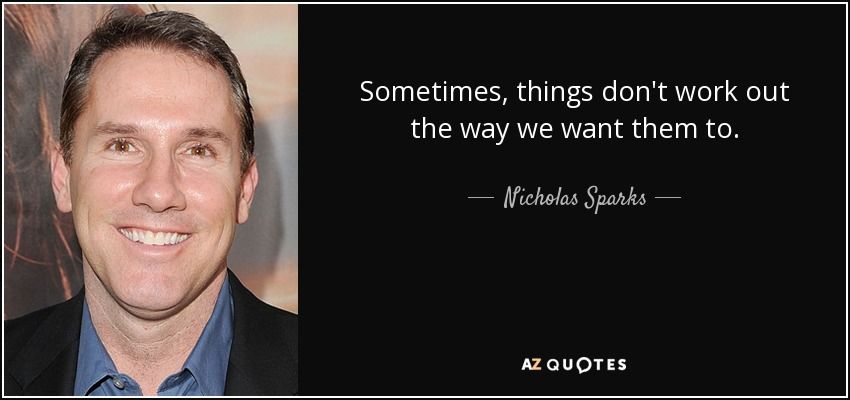
Sleep, according to Sigmund Freud, is "the royal road to the unconscious." And it speaks to us in the language of images and symbols. They are important to see and understand.
— When you dream that you are being electrocuted, it’s not only about “don’t get in - it will kill you,” sums up Alexandria Sadofeva . - Context matters.
What dreams mean and where they come from
If you dream that you are suffocating, this may be a sign of lung disease. If in a dream you were covered with earth, perhaps not everything is in order with your heart. You can learn to control your sleep - however, experienced oneironauts say that it's boring. About how scientists are trying to understand what a sleeping person sees and where prophetic dreams come from - in an excerpt from a new book by somnologist Mikhail Poluektov.
Riddles of sleep. From insomnia to lethargy
Mikhail Poluektov
Alpina non-fiction. 2019
[…] A systematic study of the influence of external stimuli on the content of dreams was carried out by Alfred Maury back in 1867. Here is what he tells about his experiments:
Here is what he tells about his experiments:
“The first observation. I was sequentially tickled with a feather on my lips and the tip of my nose. And I saw in a dream that I was subjected to terrible torture, that they put a resin mask on my face and then quickly tore it off, along with the skin of my lips, nose and face.
Second observation. At some distance from my ear, steel scissors were driven over metal tweezers. And I saw in a dream that I heard the ringing of bells, then this sound turned into an alarm - and it seemed to me that it was during the July days of 1848 ...
Ninth observation. A candle covered with red paper was passed before my eyes several times. And now I see a thunderstorm, lightning - and the memory of the terrible storm that I endured in the English Channel on the way from Mordle to Le Havre becomes the plot of my dream "*.
It's all Mori's fantasy! Can they be trusted? — Approx. scientific ed. According to modern ideas, sensory sensation partially breaks through the "thalamic block" that occurs in the state of sleep and invades the fabric of the dream, modifying it. During much of REM sleep (the so-called tonic phase), from which it is quite easy to get out, the inclusion of a stimulus in the dream plot seems to prevent the sleeper from awakening. […]
During much of REM sleep (the so-called tonic phase), from which it is quite easy to get out, the inclusion of a stimulus in the dream plot seems to prevent the sleeper from awakening. […]
It has been regularly found in dream content analysis since [sleep researcher] William Dement's early experiments that the number of words in which subjects describe their dream increases as the sleep period lengthens. More words - the dream lasts longer. The authors of these studies conclude that the duration of a dream reflects the natural flow of time. However, in a later study, it was shown that for long enough periods of sleep, after which a dream report was obtained, the number of words describing the dream changes along a sinusoid: at first their number increases, but after 45 minutes it begins to decrease. That is
dream time flows in accordance with astronomical time for half the sleep cycle, and then it begins to shrink more and more.
Based on the results of this work, carried out in 2001, the researchers suggested the presence in the brain of a dream generator with a 90-minute period. A definite answer to the question whether the flow of time in a dream corresponds to astronomical has not yet been received. Perhaps there are two types of dreams in which time flows differently**.
A definite answer to the question whether the flow of time in a dream corresponds to astronomical has not yet been received. Perhaps there are two types of dreams in which time flows differently**.
 It is worth accepting these definitions and studying each type of mental activity in a dream separately - and everything will fall into place! — Approx. scientific ed.
It is worth accepting these definitions and studying each type of mental activity in a dream separately - and everything will fall into place! — Approx. scientific ed. For example, dreams upon awakening from REM sleep are vivid, emotional, more detailed, the maximum number of words used to describe a dream in REM sleep is four times higher than in non-REM sleep. REM dreams more often have a meaningful plot that unfolds in time (there is a narrative, i.e. narrative, structure), contain a lot of motor activity. This is because dreams in REM sleep are supposed to reflect the processes of consolidation of visual and emotional memory. At the same time, dreams told after waking up from slow-wave sleep are less definite, they are more like “dreams”, abstract reflections, often containing the plot of recent events or works read / seen. It is believed that these features of dreams in non-REM sleep may be a reflection of the process of consolidation of declarative memory (memory for events). […]
[…]
The use of high-resolution EEG (when 256 electrodes are placed on the head and neck area) by Giulio Tononi's group in 2017 made it possible to deepen our understanding of the connection between dreams and typical EEG patterns. The scientists found that the frequency of dream reports, on the one hand, correlates with a decrease in the power of delta activity in the posterior regions of the brain, and on the other hand, the power of gamma oscillations increases in the same areas of the brain. This confirms the common assumption that
Change in the number of words in dream reports depending on the duration of sleep in a certain phase
During the experience of dreams, the brain areas associated with visual perception (occipital region) and processing of sensory (sensory) information (parietal region) are most active.
At the same time, the activity of the mentioned brain areas is preserved regardless of whether the dreamer sees a dream in a slow sleep or in a fast one. One of the interesting findings of this study was the discovery of differences in brain activity depending on the certainty of the dream report. The subjects, who spoke in detail about dream images, demonstrated an increase in gamma activity in additional areas of the brain, which, according to the authors, are responsible for the concretization of images. In this regard, the discussion of the question resumed: is it possible to understand at all what exactly a person saw in a dream?
One of the interesting findings of this study was the discovery of differences in brain activity depending on the certainty of the dream report. The subjects, who spoke in detail about dream images, demonstrated an increase in gamma activity in additional areas of the brain, which, according to the authors, are responsible for the concretization of images. In this regard, the discussion of the question resumed: is it possible to understand at all what exactly a person saw in a dream?
This question was raised back in 2011 by a group of German scientists from the Max Planck Institute who studied lucid dreams. Lucid (lucid) dreams are those in which a person understands that he is sleeping and can partially control the content of his dream. Maintaining volitional control in a dream can be learned. The pioneer of lucid dream research was the American psychophysiologist Stephen LaBerge. In the 1980s at Stanford University, he conducted a series of studies aimed at studying this phenomenon. It has been shown that lucidity is not usually very characteristic of dreams: 20% of people in the general population have such dreams at least once a month, and only 1% - several times a week. It was also found that during lucid dreaming, a person's EEG behaves differently than it should in REM or non-REM sleep. At this time, fast frequencies appear on the EEG - alpha and gamma rhythms, reflecting the presence of directed attention.
It has been shown that lucidity is not usually very characteristic of dreams: 20% of people in the general population have such dreams at least once a month, and only 1% - several times a week. It was also found that during lucid dreaming, a person's EEG behaves differently than it should in REM or non-REM sleep. At this time, fast frequencies appear on the EEG - alpha and gamma rhythms, reflecting the presence of directed attention.
Stephen LaBerge developed techniques for teaching people to have lucid dreams. The key to one of the techniques made famous by Christopher Nolan's Inception is to constantly ask yourself, "Am I dreaming?" To do this, a reality check is carried out - an element of the environment with known physical properties is selected and its behavior is evaluated. In the film, it was a spinning top that could spin indefinitely in a dream, despite the fact that the force of friction in the real world would not allow this. People trained in lucid dreaming are called oneironauts ( oneiros in Greek "dream, dream"). For experimental purposes, they are trained to signal that they have already realized that they are asleep with the help of characteristic left-right eye movements (this story is no longer from a movie, but from real life). With the use of such trained volunteers, the study of the neurophysiological correlates of lucid dreaming is carried out and, in general, the so-called "higher-level consciousness", which is characteristic only of people, is being studied.
For experimental purposes, they are trained to signal that they have already realized that they are asleep with the help of characteristic left-right eye movements (this story is no longer from a movie, but from real life). With the use of such trained volunteers, the study of the neurophysiological correlates of lucid dreaming is carried out and, in general, the so-called "higher-level consciousness", which is characteristic only of people, is being studied.
Despite the temptation to learn how to control your dream and the real possibility for most people to do this, the technique of lucid dreaming, in general, remains unclaimed. On the one hand, this is due to the large expenditure of time and effort to master it. The situation is exactly the same in real life with auto-training or yoga - everyone knows that this is good and good for health, but only a few manage to go through the entire training cycle. On the other hand, I was recently struck by an opinion expressed at one of the sleep seminars at the Central House of Scientists by a man who had learned to control his dreams.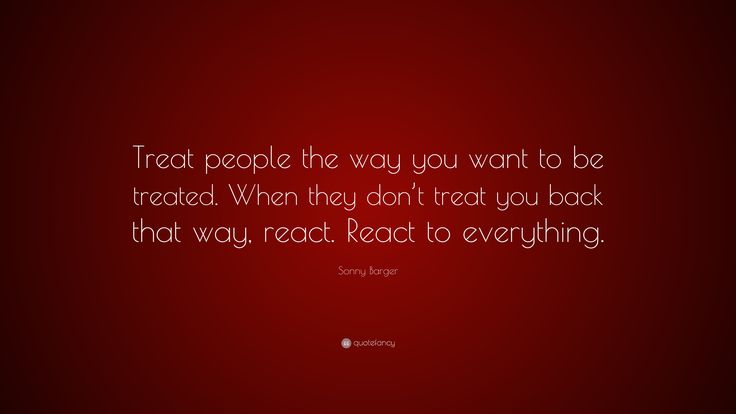 He said that at first he was pleased with the newfound ability, because he was able to make fantastic journeys, meet wonderful women in his dreams. But rather quickly these dreams bored him. He couldn't come up with anything new and lost interest in them. So
He said that at first he was pleased with the newfound ability, because he was able to make fantastic journeys, meet wonderful women in his dreams. But rather quickly these dreams bored him. He couldn't come up with anything new and lost interest in them. So
From a practical point of view, not everyone needs lucid dreams. Consciousness researchers and psychotherapists are most interested in using this phenomenon.
Based on the concept of the unconscious, a person who has learned to control a dream can, under the guidance of a psychotherapist, realize the symbolic meaning of his dreams. Even without these "psychoanalytic tricks," lucid dreams have proved useful in dealing with nightmares, enabling the person to actively counter or even befriend the terrifying dream images.
[In the work of German scientists on the study of motor activity in lucid dreams], six subjects trained to enter the state of lucid dreaming were given the task: after they realized that they were in their dream, they had to give a standard signal with their eyes (look to the right -left), and after that make the established movement with the hand - clench it into a fist. At the same time, they slept "in the tube" of a functional magnetic resonance imaging (fMRI) of the brain. Two subjects were able to fully complete the task. Changes in the fMRI pattern, which were observed in the sensorimotor area of the brain of oneironauts during the movement imagined in a dream, turned out to be identical to those that occurred during the control study in wakefulness, when they squeezed the hand or imagined squeezing it. Scientists have suggested that in the future,
At the same time, they slept "in the tube" of a functional magnetic resonance imaging (fMRI) of the brain. Two subjects were able to fully complete the task. Changes in the fMRI pattern, which were observed in the sensorimotor area of the brain of oneironauts during the movement imagined in a dream, turned out to be identical to those that occurred during the control study in wakefulness, when they squeezed the hand or imagined squeezing it. Scientists have suggested that in the future,
having accumulated many “elementary patterns” of movements appearing in a dream, we will be able to decipher its code - to understand what action is presented to a person when he sees a dream.
Additional confirmation of the ability to understand what a sleeping person sees was obtained in 2013 by a group of scientists from Japan while studying patterns of visual perception in the process of dreams. In this experiment, using fMRI, it was determined which area of the brain was activated when viewing various images, and then these indicators were compared with the results of the description by the subjects of what they saw in a dream. It turned out that it was possible to identify specific patterns of activity in the visual cortex corresponding to elementary images that, according to the reports of the subjects, were encountered in a dream, for example, the image of a building, a car, a woman, etc. It is possible that further research will also decode the visual (visual) series dreams, despite the fact that a holistic representation, according to the classical theory, is formed as a result of the interaction of several brain areas, and not the work of just one area of the visual cortex. […]
It turned out that it was possible to identify specific patterns of activity in the visual cortex corresponding to elementary images that, according to the reports of the subjects, were encountered in a dream, for example, the image of a building, a car, a woman, etc. It is possible that further research will also decode the visual (visual) series dreams, despite the fact that a holistic representation, according to the classical theory, is formed as a result of the interaction of several brain areas, and not the work of just one area of the visual cortex. […]
The areas of the brain associated with movement and sensation, located in the posterior sections of the frontal and anterior sections of the parietal lobe, despite the fact that they are activated during dreams, do not cause a response visible from the side - movements and sensations in a dream are only "seen" by a person, just as a mentally ill person in a state of hallucinosis sees and hears something, it seems to him that he is actively acting, but none of this is recorded by an external observer. The bizarreness of dream plots is explained by the reactivation of memory traces associated with the perception of information about what the sleeper did or saw, while more recent or more important memory traces for a person are reactivated statistically significantly more often than memories of what happened a long time ago, it just takes less time to excite fresh traces. electrical signal intensity.
The bizarreness of dream plots is explained by the reactivation of memory traces associated with the perception of information about what the sleeper did or saw, while more recent or more important memory traces for a person are reactivated statistically significantly more often than memories of what happened a long time ago, it just takes less time to excite fresh traces. electrical signal intensity.
According to [American psychiatrist] Hobson's theory, the dream state is closer to a mental illness, such as schizophrenia, than to normal wakefulness.
Schizophrenia is characterized by excessive activity of the "inner life" (hallucinations) with a paucity of external manifestations (apathy, poverty of emotions). From the point of view of the authors of the theory, to the greatest extent, the "switching" of sensations from external to internal, the change in the processes of memorization and perception is characteristic of REM sleep, but it can also occur in its slow phase, only to a lesser extent. This explains both the lower frequency of dream reports in non-REM sleep and the different nature of dream reports in it (more calm, dreamlike). From Hobson's point of view, during late periods of non-REM sleep (which occur already in the morning), the brain activation processes characteristic of REM sleep are introduced into the phase of non-REM sleep, anticipating the onset of the next period of REM sleep. More aphoristically, Hobson's activation-synthetic theory of dreams can be formulated as "tales that the brain tells itself." […]
This explains both the lower frequency of dream reports in non-REM sleep and the different nature of dream reports in it (more calm, dreamlike). From Hobson's point of view, during late periods of non-REM sleep (which occur already in the morning), the brain activation processes characteristic of REM sleep are introduced into the phase of non-REM sleep, anticipating the onset of the next period of REM sleep. More aphoristically, Hobson's activation-synthetic theory of dreams can be formulated as "tales that the brain tells itself." […]
The psychoanalytic concept of dreams created by Freud and his followers put an end to attempts to single out universal dream symbols for interpretation. Carl Gustav Jung wrote: “In a broader sense, it would be a great folly to assume that there is a ready-made systematic interpreter of dreams that you just need to buy and find the appropriate symbol in it. Not a single symbol of sleep can be taken separately from the person who saw this dream, just as there is no single unambiguous interpretation of any dream. Each person differs so much in the way in which his unconscious complements or compensates for consciousness that it is completely impossible to be sure that dreams and their symbolism can be in any way classified. True, there are dreams and individual symbols (I would prefer to call them "motives") that are quite typical and often encountered. Among such motives, the most frequent are falling, flying, being pursued by predatory animals or enemies, appearing in public places in a naked or half-naked form or in ridiculous clothes, a state of haste or loss in an unorganized crowd, fighting unarmed or with unusable weapons, exhausting running away to nowhere. ... But it should be emphasized that these motifs must be considered in the context of the entire dream, and not as self-explanatory ciphers.
Each person differs so much in the way in which his unconscious complements or compensates for consciousness that it is completely impossible to be sure that dreams and their symbolism can be in any way classified. True, there are dreams and individual symbols (I would prefer to call them "motives") that are quite typical and often encountered. Among such motives, the most frequent are falling, flying, being pursued by predatory animals or enemies, appearing in public places in a naked or half-naked form or in ridiculous clothes, a state of haste or loss in an unorganized crowd, fighting unarmed or with unusable weapons, exhausting running away to nowhere. ... But it should be emphasized that these motifs must be considered in the context of the entire dream, and not as self-explanatory ciphers.
What about dreams, which can show the future not in the form of some kind of ciphers, but in an explicit form? The most complete and detailed classification of the so-called prophetic dreams was proposed by the American psychologists Stanley Kripner and Joseph Dillard in 2001 in the book Dreams and Creative Problem Solving. Here we present this classification with the addition of "dreams about illness" made by Professor E.A. Korabelnikova.
Here we present this classification with the addition of "dreams about illness" made by Professor E.A. Korabelnikova.
-
Coincidence dreams.
-
Dreams-inferences, in which the dreamer intuitively compares information, often perceived outside the knowledge of the waking consciousness, which is then transformed in a dream into a correct assessment of future events. So, Mikhail Vasilievich Lomonosov once saw in a dream his father, who died after a shipwreck, on a deserted island. His friend describes these events in this way: “On the way back by sea to the fatherland (from Germany, where he studied), he once dreamed that he saw his father, thrown out after a shipwreck, on an uninhabited island in the Arctic Sea, to which he had visited in his youth once brought with him by a storm ... I found my brother there (in Moscow. - Approx. Aut.) and heard from him that their father of the same year, after the first opening of the waters, went, as usual, to the sea for fishing; that four months have already passed, and neither he, nor anyone else from his artel who traveled with him, has yet returned .
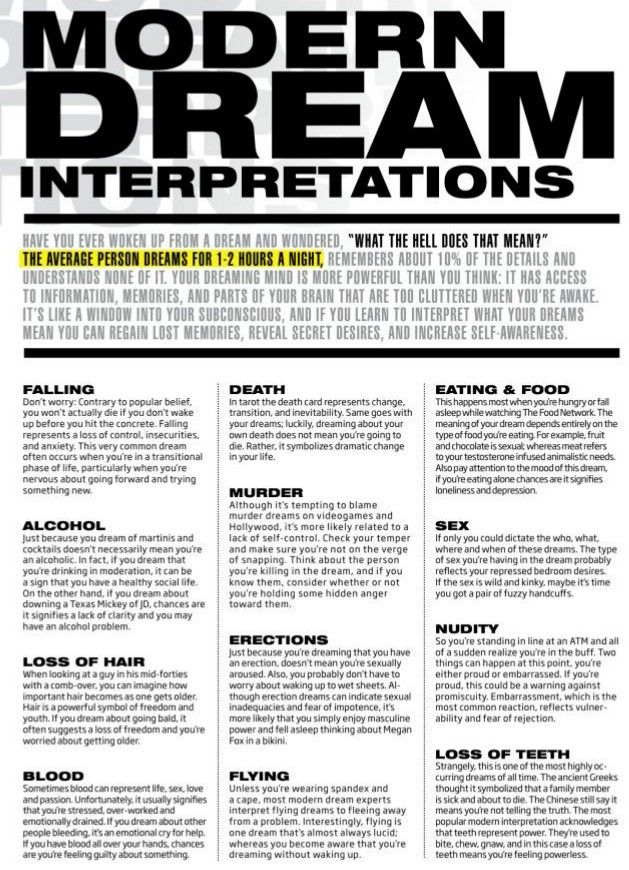 .. In the same autumn, the body of Vasily Lomonosov was truly found exactly on that empty island and buried, laying a large stone on the grave. In this case, Mikhailo Lomonosov, who was born and brought up in a family of Pomors, was aware of the danger they were exposed to when going fishing, and, apparently, represented the sailing routes of fishermen. This information, against the background of parting with the family and worry about relatives, at some point formed a forecast that had a high probability of coming true.
.. In the same autumn, the body of Vasily Lomonosov was truly found exactly on that empty island and buried, laying a large stone on the grave. In this case, Mikhailo Lomonosov, who was born and brought up in a family of Pomors, was aware of the danger they were exposed to when going fishing, and, apparently, represented the sailing routes of fishermen. This information, against the background of parting with the family and worry about relatives, at some point formed a forecast that had a high probability of coming true. -
Self-fulfilling predictions, that is, those cases when a person who has seen a dream begins to unconsciously behave in such a way that the dream comes true. Such a case is described by K.G. Jung: “Another typical case happened to a lady who was overly moral. During the day she was haughty and arrogant, but at night she had dreams filled with a wide variety of obscenities. When I suspected their presence, the lady indignantly refused to admit it. But the dreams, meanwhile, continued, and their content became more threatening and reminiscent of the walks that this woman used to take in the forest, during which she indulged in her fantasies.
 I saw danger in this, but she did not heed my warnings. Soon, a sexual maniac attacked her in the forest, and only the intervention of people who heard cries for help saved her from imminent murder.
I saw danger in this, but she did not heed my warnings. Soon, a sexual maniac attacked her in the forest, and only the intervention of people who heard cries for help saved her from imminent murder. -
Pseudo-anomalous dreams, about the content of which a person either consciously lies, unconsciously fabricates or distorts the facts. So, for example, the dream of Scipio mentioned at the beginning of the chapter was invented by Cicero to enhance the instructive effect of his work.
-
Abnormal dreams in which the incoming information may be beyond anything known to the science of space, time or energy.
-
Dreams about illness. Soviet researcher Vasily Nikolaevich Kasatkin at 19In 83 he published a unique monograph "The Theory of Dreams", which became a generalization of 47,000 observations of dreams made by him. In it, he described in detail the features of the dreams of people suffering from various diseases. Often these unusual dreams were harbingers of the development of the disease.
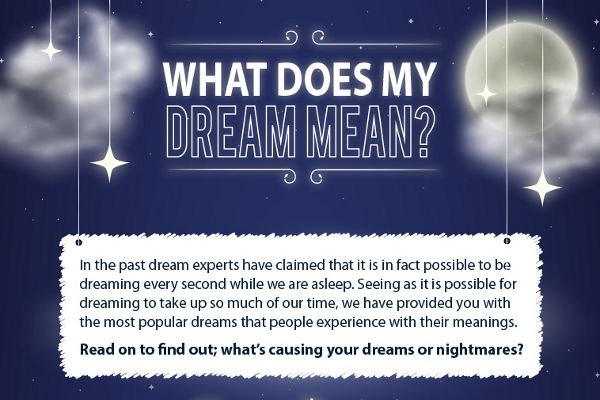 According to the observations of V.N. Kasatkina,
According to the observations of V.N. Kasatkina,
The dreams of people with lung diseases are characterized by plots of drowning, squeezing through a narrow hole, and strangulation. In case of heart disease, a person in a dream can see that he was covered with earth or he was hit by a stone, wounded in the region of the heart, while he wakes up with a feeling of fear.
E.A. Korabelnikova also showed that in people with neurosis, dreams are more common, they are more vivid, emotional. The features of perception in the dreams of patients with neurotic disorders also included: a large proportion of the novelty factor (appearance of strangers, surroundings), symptoms of direct and reverse "age transference" (perception of oneself older or younger than one's age). While the events in the dreams of healthy people predominantly occurred in the present, patients with neuroses more often experienced events of the past and future. Their dreams more often turned out to be incomplete or had an unfavorable outcome - in general, the dreams of patients with neuroses were a reflection of a violation of their mental adaptation.






